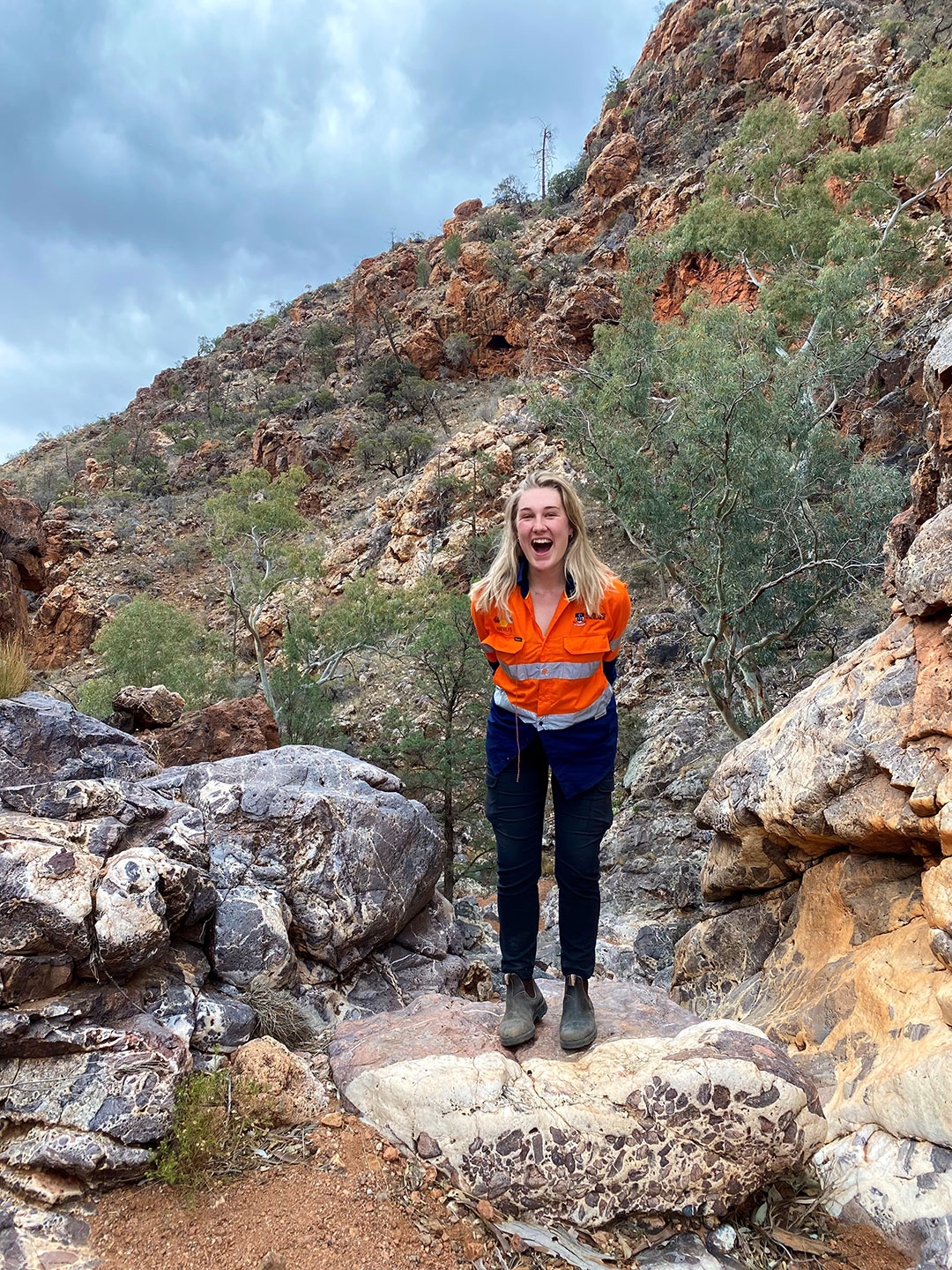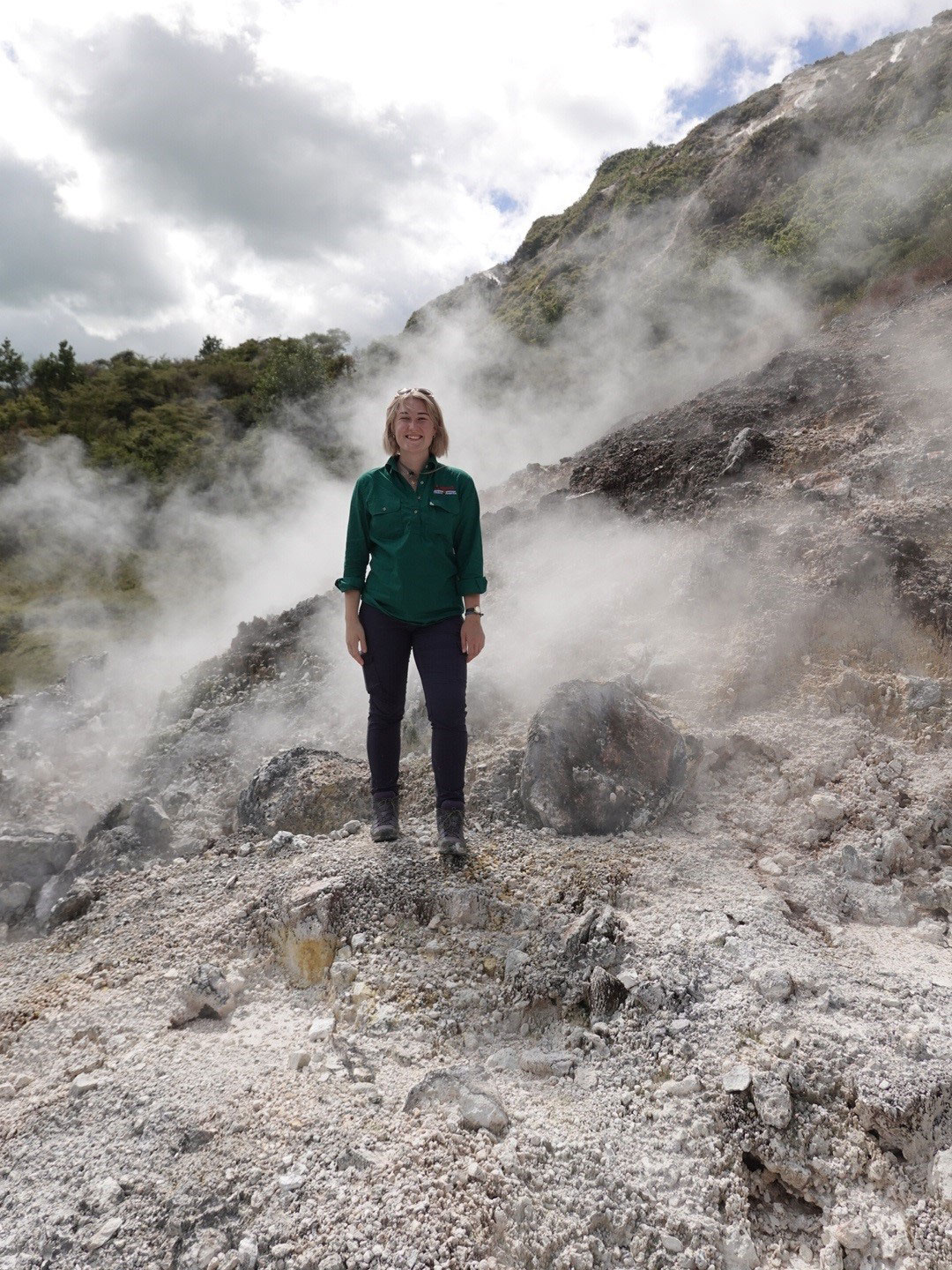Visiting honours student Holly Cooke on her Prominent Hill mine waste characterisation project
Holly Cooke on her collaborative MIWATCH, University of Adelaide, and OZ Minerals mine waste characterisation project at Prominent Hill tailings.
 After one year at OZ Minerals, four years of undergraduate geology, and a lifetime of adoration for the natural world – I am thrilled to work with MIWATCH, OZ Minerals and the University of Adelaide on a mine waste characterisation honours project in my own South Australian backyard.
After one year at OZ Minerals, four years of undergraduate geology, and a lifetime of adoration for the natural world – I am thrilled to work with MIWATCH, OZ Minerals and the University of Adelaide on a mine waste characterisation honours project in my own South Australian backyard.
My 2023 honours project with MIWATCH investigates the mineralogical and geochemical properties of OZ Minerals’ Prominent Hill tailings. Thanks to ongoing support from my Think and Act Differently team at OZ Minerals, and mentorship from my project supervisors Dr Laura Jackson, Dr Anita Parbhakar-Fox and Dr Carl Spandler, I am ready for a busy year of analytical science.
Truth be told, this isn’t the line of research I thought I’d embark on when I began my geoscience major four short years ago. But over the course of my degree, I’ve learned that an earth science perspective constructs powerful frameworks with which to interact with Earth – including how we mine.
Long before I knew minerals, metallurgy, or mining – I knew nature. I knew the crisp winter starlight and coastal cliff faces illuminated by the full moon. I knew the bending and bowing of the meandering River Murray and summer sunsets over the dusty Flinders Ranges. Long before I became technically qualified in earth’s natural resources, I was learning the most precious of them all – balance. So, why is tailings characterisation a step in this balanced direction? Bear with me.
I’m sure you’ve noticed – Earth is a curious and ancient chemical glitch in our little corner of the cosmos. Somewhere among 4.5 billion years of natural history, nearly 6000 mineral species and 8 billion human beings came to share this planet. Our ongoing dependency on the Earth is not just a feature of our lives, our earth-dependency entirely constitutes our existence. The sand in our cement, the phosphorous in our fertiliser, the copper in our cars, and indium in our digital screens – we owe it all to the vibrant chemical constituency of nature.
 Over time, our extraction of these elements from the ground beneath to the world above has created catastrophic quantities of mine waste. 100 billion tonnes per year, at last check. The energy, time, and cost-intensive generation of such extreme quantities of discarded material is surely the heaviest misplacements of value of our time. Why?
Over time, our extraction of these elements from the ground beneath to the world above has created catastrophic quantities of mine waste. 100 billion tonnes per year, at last check. The energy, time, and cost-intensive generation of such extreme quantities of discarded material is surely the heaviest misplacements of value of our time. Why?
Because when we dig the Earth to recover minerals and metal, we extract the entire mineralogical systems attached to our ore. These peripheral minerals, in their megatons, are still of earth and can be natural resources if we choose them to be. After all, nature knows no waste. Nature knows silicon, indium, cobalt, and cerium. And these elements – critical to the very technology manufactured to make the world better – sit in the megatons in mine waste across the globe.
So, back to balance – striking balance between earth and modern society is the heartbeat of this project. How can we recover the next generation of metal in a manner that explicitly and wholistically accounts for circularity in extractive operations? It starts reimagining with mine waste. For me, and for MIWATCH, the University of Adelaide and OZ Minerals, casting a mineralogical eye over Prominent Hill tailings is a terrific place to start. I’ve never been more eager to put geoscience to work. I am excited and ready for my year with MIWATCH, and I’m thankful for this collaborative opportunity with OZ Minerals and the University of Adelaide.
